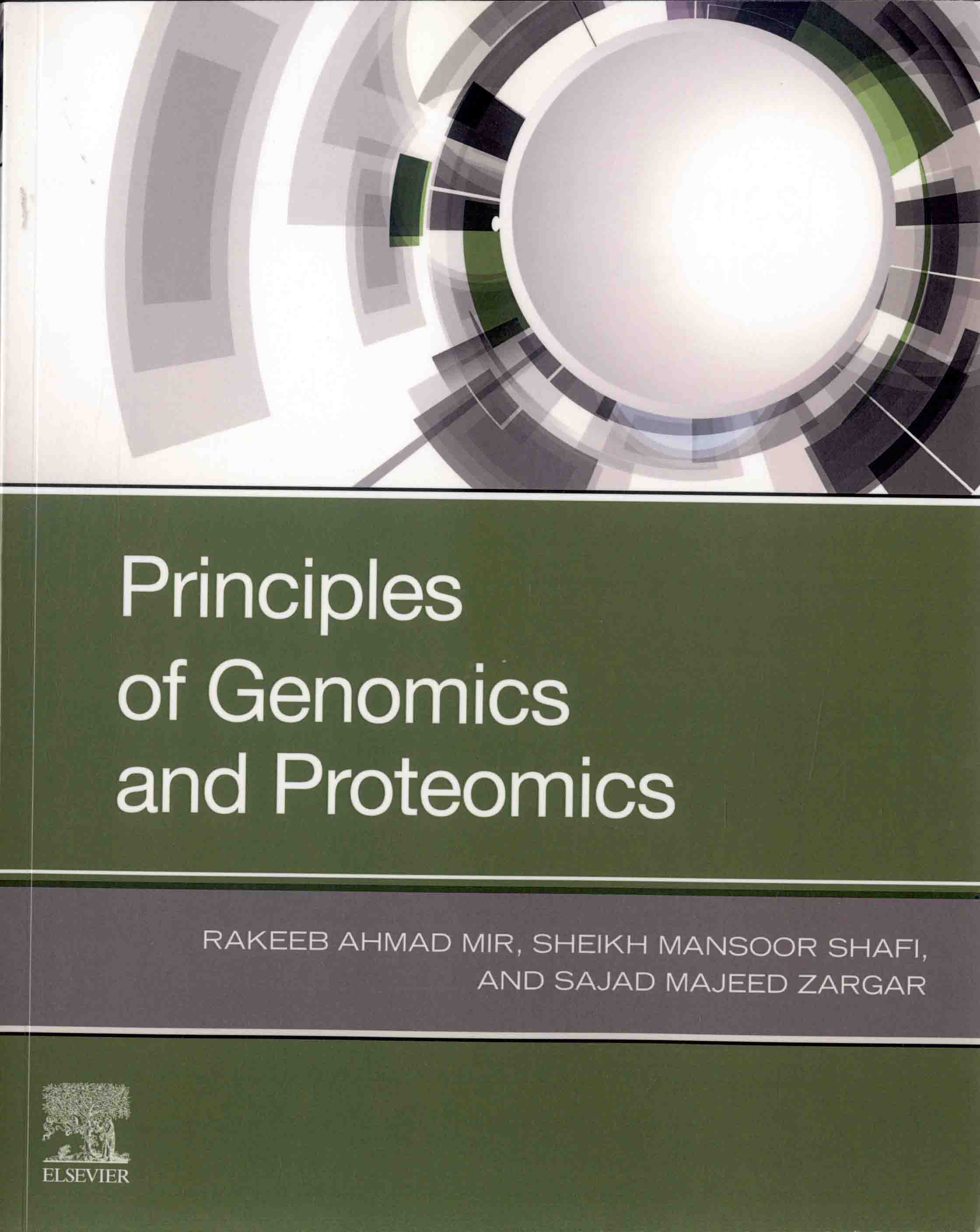 |
Principles of genomics and proteomics / Rakeeb Ahmad Mir, Sheikh Mansoor Shafi, Sajad Majeed Zargar. -- Cambridge MA : Elsevier, 2023. – (58.21/M671) |
Contents
About the authors
Foreword xvii
Preface xix
Acknowledgments xxi
CHAPTER 1 Understanding the OMICS techniques: an introduction to genomics and proteomics 1
1 Introduction to genomics 1
2 Genomes of the eukaryotes--nuclear and organelle genomes 7
3 Organization of eukaryotic genome 10
4 Organelle genome editing 18
5 Introduction to proteomics 20
6 Proteome profiling 25
7 Conclusion 26
References 26
CHAPTER 2 Genome mapping 29
1 Introduction 29
2 Markers 30
3 Physical mapping 40
References 44
CHAPTER 3 Analysis of genomes--I
1 Introduction 47
2 Sangers sequencing/chain-termination sequencing method 48
3 Whole-genome shotgun sequencing 50
4 Hierarchical shotgun sequencing 50
5 Next-generation sequencing methods 51
6 Genome sequencing projects 55
7 Conclusion 62
References 63
CHAPTER 4 Analysis of genomes--II
1 Introduction 65
2 DNA footprinting/deoxyribonuclease I (DNase I) protection mapping
3 Gel retardation assay or electrophoretic mobility shift assay or band shift assay
4 Chromatin immunoprecipitation and its variants 73
5 Conclusion 83
References 83
CHAPTER 5 Nutrigenomics: Insights into the influence of nutrients on functional dynamics of genomes 89
1 Introduction 89
2 Nutrigenomics studies of selected crop plants--a repository of functional foods
3 Conclusion 104
References 105
CHAPTER 6 Analysis of proteomes--I
1 Polyacrylamide gel electrophoresis and SDS-PAGE 111
2 Isoelectric focusing gels 117
3 2D gel electrophoresis-combining SDS-PAGE and IEF for unison gel-based identification of proteins on the basis of size and charge 118
4 MALDI-TOF mass spectrometry 120
5 Isotope-coded affinity tags 125
6 Isotope-coded protein labeling 127
7 Isobaric tags for relative and absolute quantification 128
8 The tandem mass tag 131
9 Stable isotopic labeling of amino acids in cell culture 131
10 Discussion 135
References 135
CHAPTER 7 Analysis of proteomes--II
1 Introduction 139
2 Ultraviolet and visible light spectroscopy 139
3 Fluorescence spectroscopy 146
4 Nuclear magnetic resonance spectroscopy 149
5 X-ray diffraction 154
6 Circular dichroism 159
7 Conclusion 161
References 161
CHAPTER 8 Analysis of proteomes--III
1 Protein structure prediction 165
2 Protein secondary and tertiary structure predictions 165
3 Homology or template-based modeling 166
4 Protein threading 169
5 Ab initio protein structure predictions 170
6 Conclusions 173
References 173
CHAPTER 9 Analysis of proteomes--IV
1 Introduction 177
2 Yeast 2-hybrid system 177
3 Principle 179
4 Advantages and limitations 180
5 Limitations of Y2H assays 180
6 Phage display 180
7 Application 181
8 Protein chips 182
9 Applications of protein microarrays 184
10 Conclusion and future prospective 187
References 188
CHAPTER 10 Beyond genomics and proteomics 191
1 Introduction
2 Transcriptomics
3 Metabolomics
4 Interactomics 204
5 Lipidomics 209
6 Metagenomics 213
7 Ionomics 218
8 Connectomics 221
9 Conclusion 225
References 226
Further reading 242
Index 245